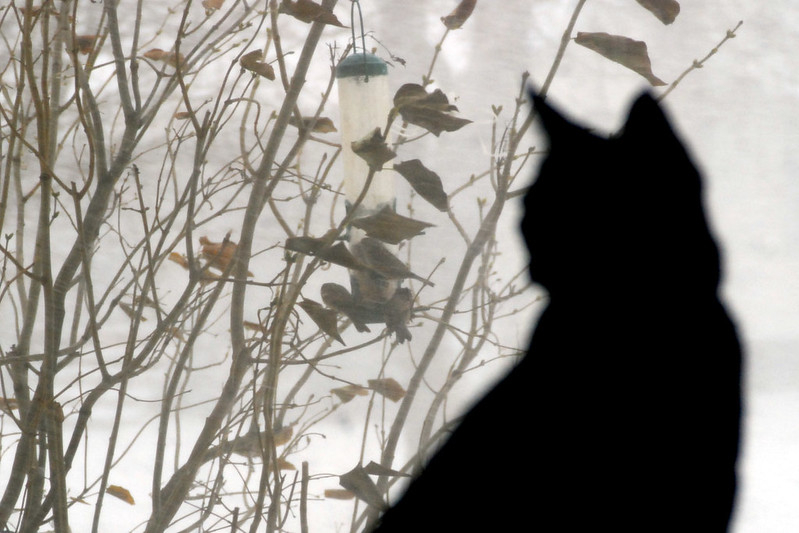This story was originally published by The Guardian and appears here as part of the Climate Desk collaboration.
Cats may be adored human companions, but they are also highly effective killers, according to a study that shows they eat more than 2,000 species globally — including hundreds that are of conservation concern.
Since domestication 9,000 years ago, house cats have spread to all continents except Antarctica. In the paper, published in Nature Communications, researchers describe them as “amongst the most problematic invasive species in the world.”
“Our study sheds light on the predatory habits of one of the world’s most successful and widely distributed invasive predators,” the researchers, led by Christopher Lepczyk from Auburn University in the U.S., wrote in the paper.
Birds, mammals, insects and reptiles are all on the menu, 17 per cent of which are of conservation concern according to the research, which is the first to quantify their diet on a global scale.
In total, cats eat 981 species of bird, 463 reptiles and 431 mammals — comprising about 90 per cent of species consumed. They were also found to feed on 119 species of insects and 57 amphibians.
Cats are particularly damaging on islands, where they eat three times the number of species of conservation concern compared to what they eat on continents. For example, they are known to have eaten species that are now extinct in the wild, including New Zealand’s Stephens Island Rockwren and the New Zealand quail.
Their impact on wildlife has spurred fierce debate in New Zealand, where one politician is campaigning to eradicate them and controversy has erupted over competitions encouraging children to shoot feral cats.
In Australia alone, cats are estimated to kill more than 300 million animals every year, with conservation groups calling for cats to be kept indoors. Some places have implemented feline lockdowns. In the southwestern German town of Walldorf, people have been ordered to keep their cats locked inside for three months in spring to protect an endangered population of crested larks, which breed at that time.
Previous research has found there is a “considerable blind spot” when it comes to acting on the “large-scale negative impacts” of domestic cats on native wildlife.
The study found about nine per cent of known birds, six per cent of known mammals, and four per cent of known reptile species are eaten by cats — and they are not fussy snackers. “Cats are largely eating what is present,” researchers wrote. “If a species is missing in the diet analysis, it is likely that the prey is either absent or rare in the surrounding environment.”
The scientists reached these figures by trawling through hundreds of existing studies. They believe their final estimates are conservative and will grow as more research is done. Their study looked at free-ranging domestic cats. Some of the larger animals included in the total count might be scavenged by cats, not necessarily caught as prey.
A spokesperson from the Royal Society for the Protection of Birds (RSPB) said: “Fitting bells to quick-release collars and keeping cats inside overnight are simple ways to reduce the number of wild birds and other wildlife that they catch. Ultrasonic devices can also be a harmless but effective way to reduce the amount of time cats spend in gardens.
“Beyond gardens, cat predation can cause particular problems for vulnerable and restricted populations of birds, in particular, birds that nest low to or on the ground,” the spokesperson said.
“It can also be an issue for birds that have evolved on islands where terrestrial predators would not naturally occur. So, it’s a good idea to limit new residential developments being built too close to important sites for ground-nesting birds, and reduce or remove feral cat populations on islands where they do not belong.”
Mike Toms from the British Trust for Ornithology (BTO), who was not involved in the study, said it provided “a welcome and much-needed global assessment of the impacts that free-ranging cats have on wildlife.”
He said: “That [the study] highlights areas of particular concern — such as the impacts of cats on island populations — will help conservation action to be directed to where it is most needed.”
But cats have always hunted
But cats have always hunted birds ... especially when there's a shortage of mice. Why is seen as a problem? Bird species, like all others, benefit from culling the weak and the stupid from their numbers. Maybe they could be trained to go for squirrels and raccoons, in addition to the mice and rats they already like.
Since the cats have all "gone indoors" the rat infestation in Toronto has become obvious to all. Especially whenever there's construction that involves digging. They favor veggie gardens. So much for growing one's own food.
No animal belongs indoors all the time, without benefit of health-giving sunlight.
Instead, we have dogs with ill-bred owners, and a dogsh*t problem.
And we have far too many starlings as is, thank you. Not to mention pigeons.
They never went for gulls ... which have nevertheless pretty much disappeared. So odds are that significant amounts of bird deaths are because of whatever's getting the gulls.
If you love your cat you will
If you love your cat you will keep it indoors or do as many are now doing, take it outdoors on a leash. Cats that roam free have much shortened lives. They are killed by cars, catch nasty diseases or are eaten by coyotes. They can learn to live happy lives indoors as has been amply demonstrated.
Meanwhile as the study has indicated cats have a devastating impact on our wildlife.
If you are truly concerned about the welfare of your cat and the healthy future of our small wild animals and birds, you will support keeping cats indoors.





Comments